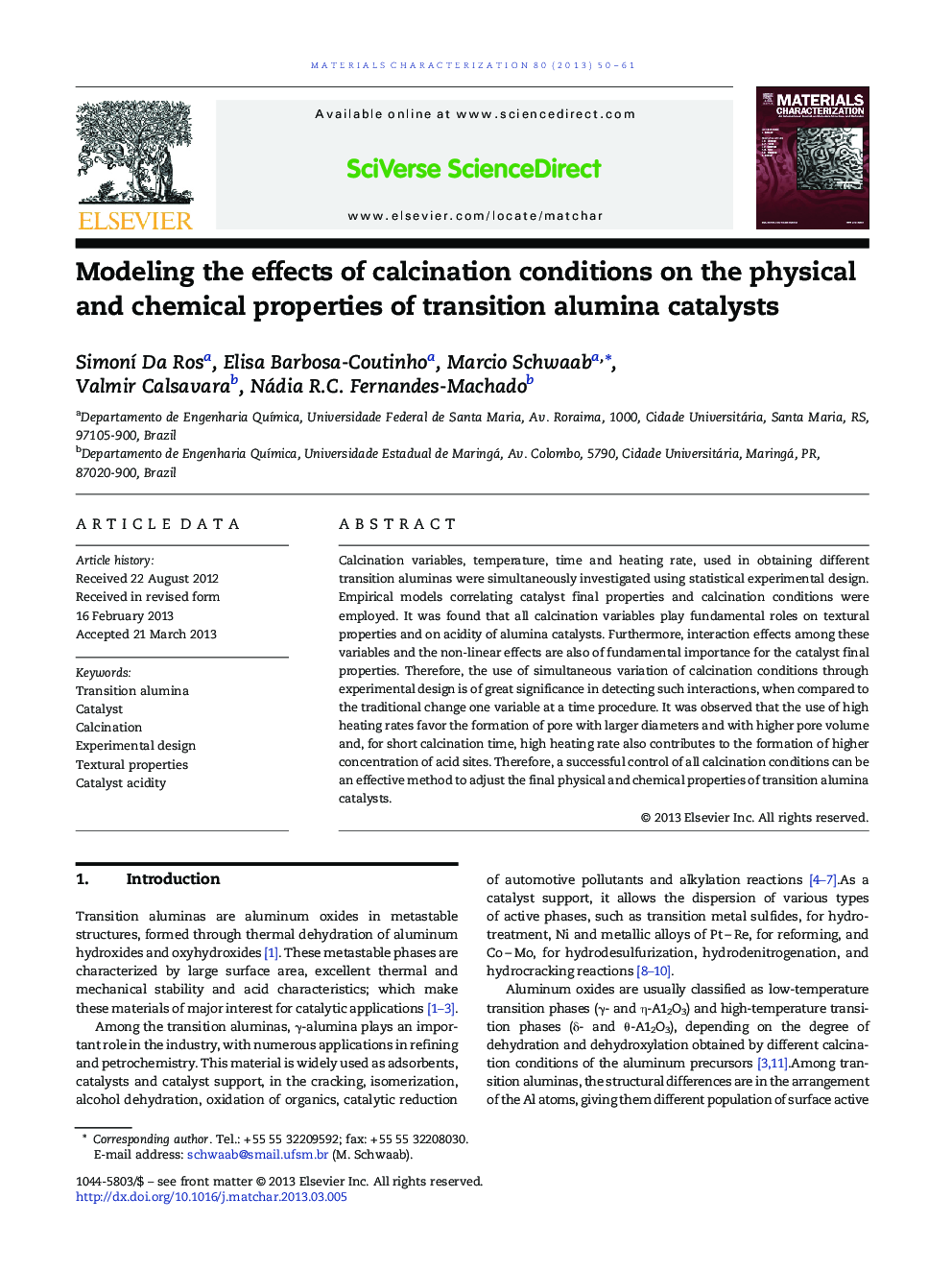| Article ID | Journal | Published Year | Pages | File Type |
|---|---|---|---|---|
| 1571203 | Materials Characterization | 2013 | 12 Pages |
•Physical and chemical characterization of transition aluminas•Alumina synthesis based on an experimental design•Statistical based evaluation of calcination conditions in alumina synthesis•Development of empirical models for understanding of alumina synthesis•Development of empirical models for property prediction of new synthesized aluminas
Calcination variables, temperature, time and heating rate, used in obtaining different transition aluminas were simultaneously investigated using statistical experimental design. Empirical models correlating catalyst final properties and calcination conditions were employed. It was found that all calcination variables play fundamental roles on textural properties and on acidity of alumina catalysts. Furthermore, interaction effects among these variables and the non-linear effects are also of fundamental importance for the catalyst final properties. Therefore, the use of simultaneous variation of calcination conditions through experimental design is of great significance in detecting such interactions, when compared to the traditional change one variable at a time procedure. It was observed that the use of high heating rates favor the formation of pore with larger diameters and with higher pore volume and, for short calcination time, high heating rate also contributes to the formation of higher concentration of acid sites. Therefore, a successful control of all calcination conditions can be an effective method to adjust the final physical and chemical properties of transition alumina catalysts.
